Stephan Balduin
On zero-shot learning in neural state estimation of power distribution systems
Aug 11, 2024



Abstract:This paper addresses the challenge of neural state estimation in power distribution systems. We identified a research gap in the current state of the art, which lies in the inability of models to adapt to changes in the power grid, such as loss of sensors and branch switching. Our experiments demonstrate that graph neural networks are the most promising models for this use case and that their performance can degrade with scale. We propose augmentations to remedy this issue and perform a comprehensive grid search of different model configurations for common zero-shot learning scenarios in neural state estimation.
Imitation Game: A Model-based and Imitation Learning Deep Reinforcement Learning Hybrid
Apr 02, 2024Abstract:Autonomous and learning systems based on Deep Reinforcement Learning have firmly established themselves as a foundation for approaches to creating resilient and efficient Cyber-Physical Energy Systems. However, most current approaches suffer from two distinct problems: Modern model-free algorithms such as Soft Actor Critic need a high number of samples to learn a meaningful policy, as well as a fallback to ward against concept drifts (e. g., catastrophic forgetting). In this paper, we present the work in progress towards a hybrid agent architecture that combines model-based Deep Reinforcement Learning with imitation learning to overcome both problems.
Learning to Attack Powergrids with DERs
Apr 24, 2022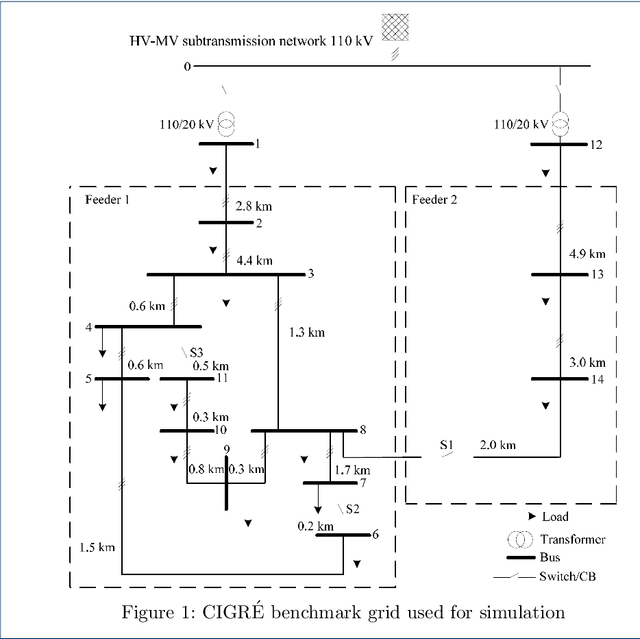

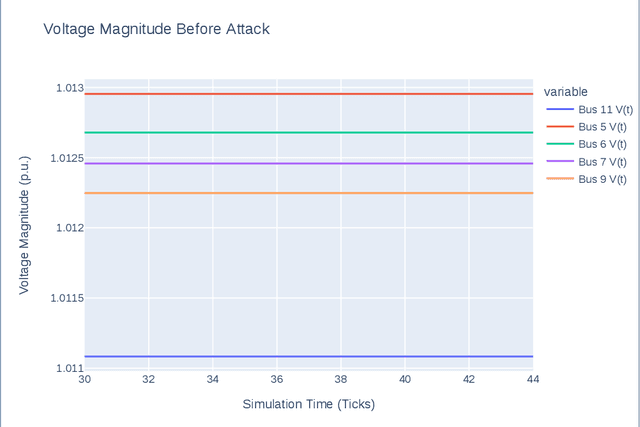
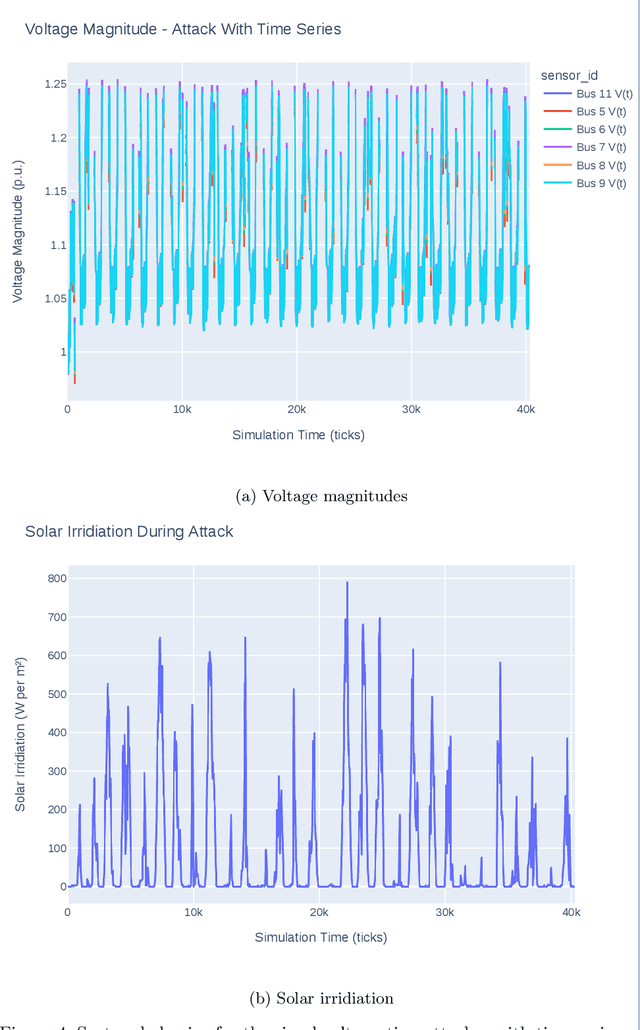
Abstract:In the past years, power grids have become a valuable target for cyber-attacks. Especially the attacks on the Ukrainian power grid has sparked numerous research into possible attack vectors, their extent, and possible mitigations. However, many fail to consider realistic scenarios in which time series are incorporated into simulations to reflect the transient behaviour of independent generators and consumers. Moreover, very few consider the limited sensory input of a potential attacker. In this paper, we describe a reactive power attack based on a well-understood scenario. We show that independent agents can learn to use the dynamics of the power grid against it and that the attack works even in the face of other generator and consumer nodes acting independently.
Sampling Strategies for Static Powergrid Models
Apr 19, 2022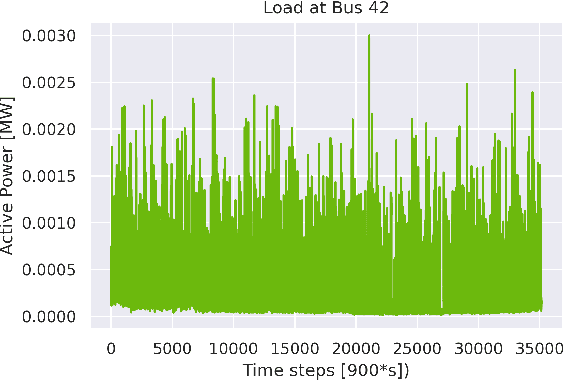
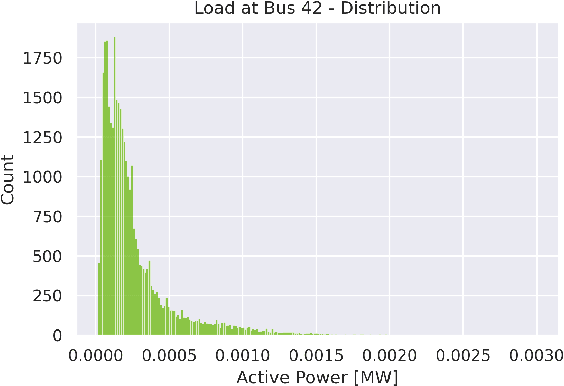
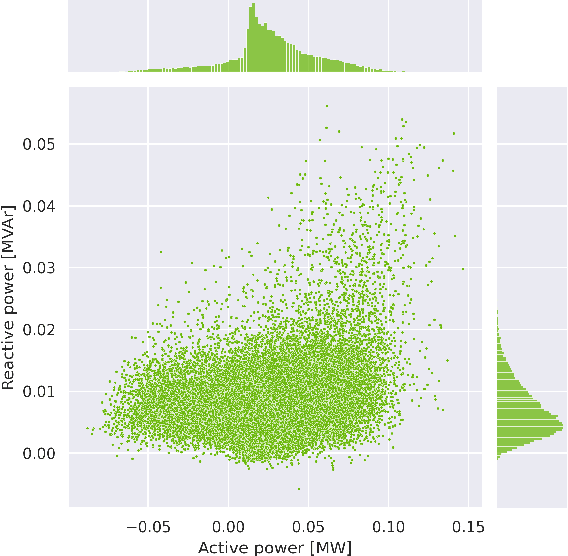
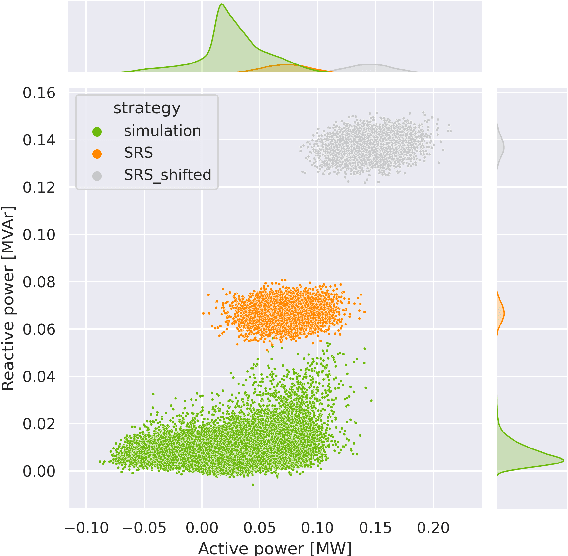
Abstract:Machine learning and computational intelligence technologies gain more and more popularity as possible solution for issues related to the power grid. One of these issues, the power flow calculation, is an iterative method to compute the voltage magnitudes of the power grid's buses from power values. Machine learning and, especially, artificial neural networks were successfully used as surrogates for the power flow calculation. Artificial neural networks highly rely on the quality and size of the training data, but this aspect of the process is apparently often neglected in the works we found. However, since the availability of high quality historical data for power grids is limited, we propose the Correlation Sampling algorithm. We show that this approach is able to cover a larger area of the sampling space compared to different random sampling algorithms from the literature and a copula-based approach, while at the same time inter-dependencies of the inputs are taken into account, which, from the other algorithms, only the copula-based approach does.
Analyzing Power Grid, ICT, and Market Without Domain Knowledge Using Distributed Artificial Intelligence
Jun 10, 2020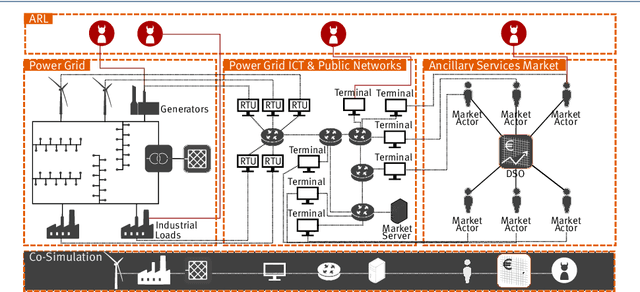
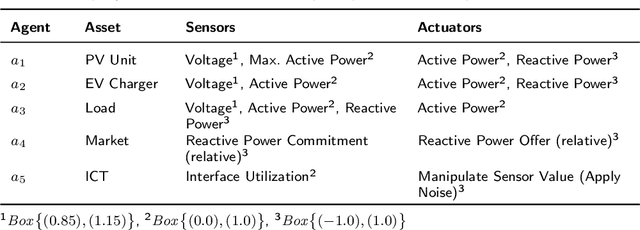
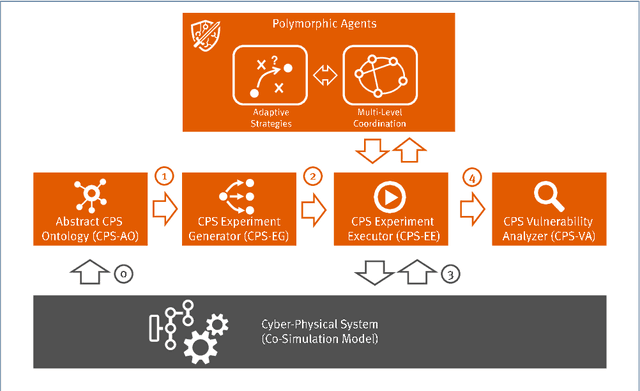

Abstract:Modern cyber-physical systems (CPS), such as our energy infrastructure, are becoming increasingly complex: An ever-higher share of Artificial Intelligence (AI)-based technologies use the Information and Communication Technology (ICT) facet of energy systems for operation optimization, cost efficiency, and to reach CO2 goals worldwide. At the same time, markets with increased flexibility and ever shorter trade horizons enable the multi-stakeholder situation that is emerging in this setting. These systems still form critical infrastructures that need to perform with highest reliability. However, today's CPS are becoming too complex to be analyzed in the traditional monolithic approach, where each domain, e.g., power grid and ICT as well as the energy market, are considered as separate entities while ignoring dependencies and side-effects. To achieve an overall analysis, we introduce the concept for an application of distributed artificial intelligence as a self-adaptive analysis tool that is able to analyze the dependencies between domains in CPS by attacking them. It eschews pre-configured domain knowledge, instead exploring the CPS domains for emergent risk situations and exploitable loopholes in codices, with a focus on rational market actors that exploit the system while still following the market rules.
 Add to Chrome
Add to Chrome Add to Firefox
Add to Firefox Add to Edge
Add to Edge